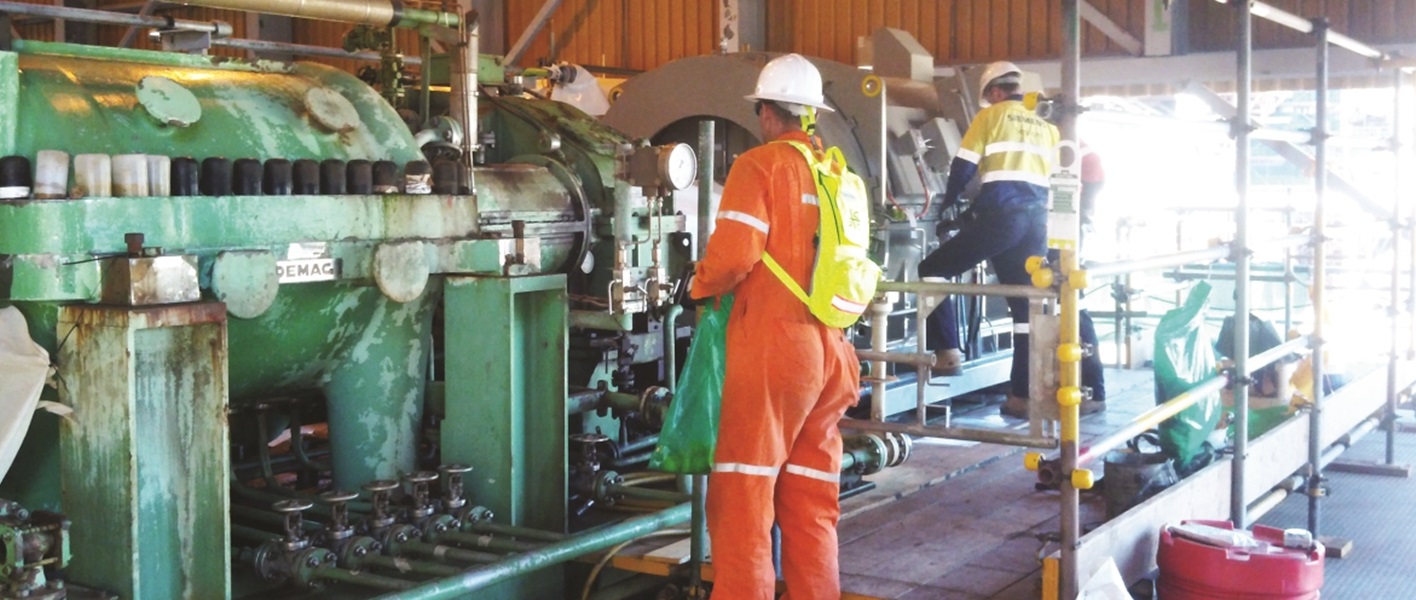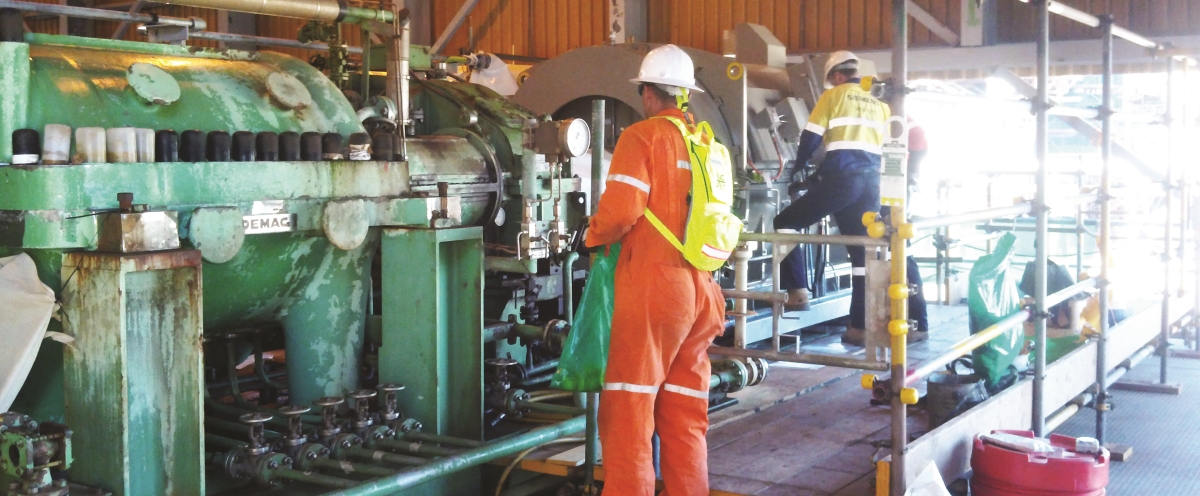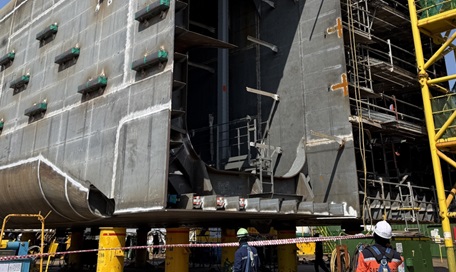Turnaround triumph for GWA and KGP
After two years of planning and preparation, Woodside and its contractors delivered the Goodwyn A and Karratha Gas Plant integrated turnaround

After two years of planning and preparation, Woodside and its contractors delivered the Goodwyn A and Karratha Gas Plant integrated turnaround
As turnaround manager Russell Probert puts it: “The scope was important, the schedule ambitious and success was critical.
“Success for us means safely executing quality work and returning the business to normal operations when planned.”
It was no simple task.

Across the two assets, the turnaround scope included a huge range of work fronts and technical disciplines.
“I’ve been involved in turnarounds for 15 years and this was probably the most complex scope I’ve known,” Russell says.
In 34 days, Maintenance, Operations, Projects (brownfields), Engineering, Subsea, Logistics, Contracting and Procurement and many more teams safely delivered some 100,000 hours of scope within range of the schedule target.
At Goodwyn, around 50,000 hours were required for all tasks. This work will help extend the life of Goodwyn, supporting the facility to keep producing into 2040.
Principal project engineer Eric Kumar explains Goodwyn’s brownfields scopes included upgrading the digital control system (DCS), which itself required more than 3300 points cut over.
Russell adds: “It’s like performing open heart surgery and it’s critical because the plant relies on DCS.”
Other important scopes included replacing the flare tip and the interfield line riser emergency shutdown valve (RESDV) line connecting GWA to the second trunkline and North Rankin.
The RESDV was installed during Goodwyn construction in the early 1990s. The complexity of this job was not limited to replacing the valve, but enabling it with the right isolations.
“This scope had never been done before at Woodside, and it was made possible by a new isolation strategy which used a high diff rential pressure plug,” explains Russell.
Vanessa Bullock, pigging engineer for the isolation, also shared some facts about the project.
“The isolation, a first in many ways, avoided fl ing significant quantities of gas, and enabled North West Shelf production to continue from North Rankin,” she notes.
Not only did these tasks all require a complete platform outage, they demanded a diverse range of technical disciplines and high level of execution competency – all within the constraint of numbers of people that can be accommodated on GWA.
But the clever turnaround team didn’t allow the accommodation constraints to limit them. For the first time in a turnaround, one-day shuttle helicopter flights were performed to enable additional people on the facility up to the limit prescribed by the safety case.
In another first for the turnaround team, new ocean forecasting provided by the metocean team improved execution.
Previously, Indian Ocean forecasts have been used to inform periods of unsafe conditions – when lifting activities on the deck and ocean are constrained.
As these regional forecasts have lower accuracy, unnecessary stand-down time eventuates.
For this turnaround, our metocean team was able to provide a more accurate 48 hour look ahead local to GWA ocean conditions with three-hour accuracy of predicted conditions. This increased accuracy of conditions reduced stand- down time.
At KGP, an equivalent magnitude of hours were executed.
“The main work scopes at KGP involved leak repairs to two main cryogenic heat exchangers, as well as vessel replacements and upgrades of control systems,” notes Russell.
As part of the quality checks for the work, a leak-testing program is executed. In another first, no leaks were identified. This demonstrates the team’s right first time approach to quality.
The variety of work scopes meant collaboration and agility would be even more important, and so it proved. As issues were identified and flagged, quick resolution was made possible with access to leadership and support for prioritisation and scheduling.
Jeroen Buren, senior vice president Production, points out the time and effort put into the turnaround before it started was crucial to its success.
“In the months leading into the campaign, there was a lot of work to be done and by collaborating the teams got there,” says Jeroen.
“It was an amazing outcome,” he says. “And to achieve this outcome, many teams were involved – each of which worked smarter to do better and do more.”
Focus is now switching to the next integrated major turnaround in September 2018, and beyond into 2019.
As Russell says: “We’ll take the learnings and improve both the planning and the execution.”
A major turnaround of Pluto, which has never been done before, is scheduled for Q2 2019. Jeroen says successful execution will follow from the best practice learnings of this year’s activities and past major turnarounds on KGP Trains 4 and 5.
“In 2015 our teams executed the world’s fastest turnaround of a Frame 7 LNG driven turbine in KGP (Train 5). I am sure the Pluto 2019 turnaround team will aim to match or beat this achievement," Jeroen says.



